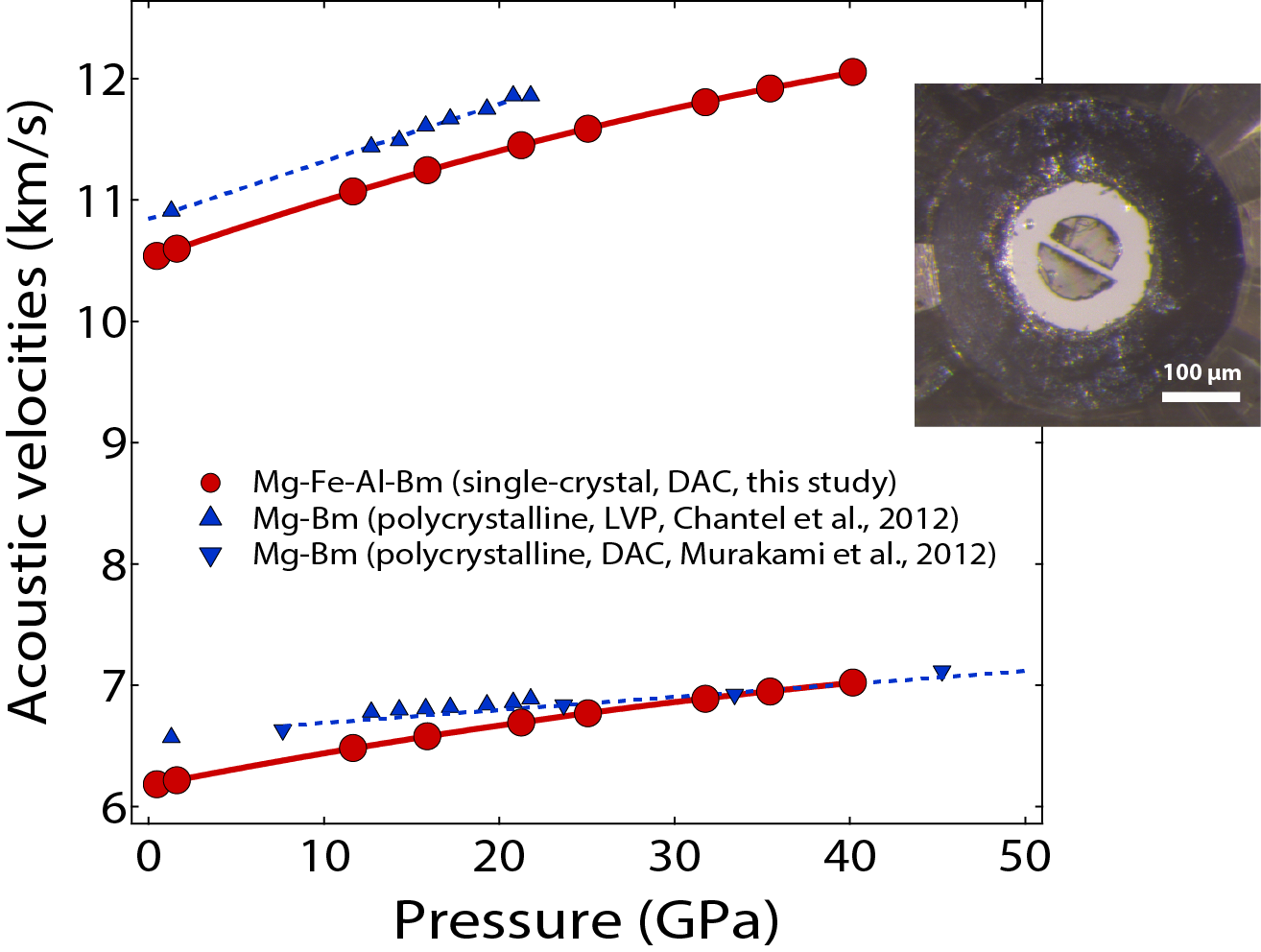
Evidence for a Fe3+-rich pyrolitic lower mantle from (Al,Fe)-bearing bridgmanite elasticity data
A. Kurnosov, H. Marquardt, D. J. Frost, T. Boffa Ballaran & L. Ziberna
Nature 543, 543-546 (23 March 2017) | doi: 10.1038/nature21390
http://www.nature.com/nature/journal/v543/n7646/full/nature21390.html
Scientists from BGI Bayreuth measured the high-pressure seismic properties of (Al,Fe)-bearing bridgmanite, Earth’s most abundant mineral, in the laboratory. To facilitate these measurements, advanced FIB sample preparation techniques were combined with a worldwide unique Brillouin spectroscopy and x-ray diffraction laboratory system operating at BGI Bayreuth. It has been found that the seismic velocities of (Al,Fe)-bearing bridgmanite are markedly different from those previously reported for the Mg-endmember of bridgmanite.
Based on the novel measurements, synthetic seismic profiles for the Earth’s lower mantle have been calculated in order to test mineralogical models directly against seismic observations. It is found that velocities predicted for a lower mantle with a pyrolitic model composition are in excellent agreement with seismic observables if the newly determined effects of Fe/Al-incorporation on the seismic properties of bridgmanite are taken into account. Furthermore, it is found that the modelled velocities are in increasingly poor agreement with those of the lower mantle at depths >1200 km, indicating either a change in bridgmanite cation ordering or a decrease in the ferric iron content of the lower mantle. This finding calls for follow-up studies designed to understand possible effects on the physical and chemical properties of the lower mantle.

Pressure-dependence of the here-derived average acoustic velocities of Al-Fe-bearing bridgmanite (red circles). The blue dotted line indicates the pressure-trend of Mg-endmember bridgmanite inferred from previous work. The inset shows a view into the pressure chamber of a diamond-anvil cell loaded with two half-circular samples of single-crystal Al-Fe-bearing bridgmanite with different crystallographic orientations.
Tel: +49-(0) 921 55 3700 / 3766, Fax: +49-(0) 921 55 3769, E-mail: bayerisches.geoinstitut(at)uni-bayreuth.de